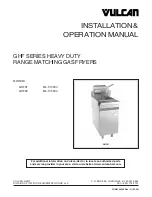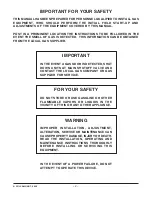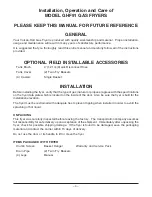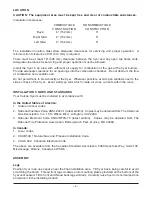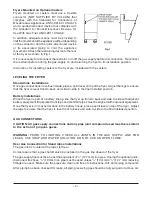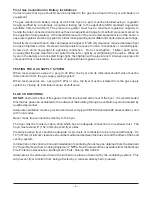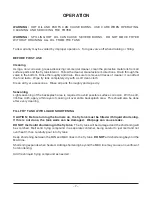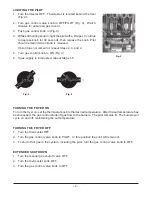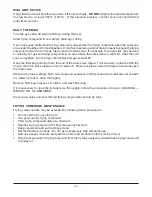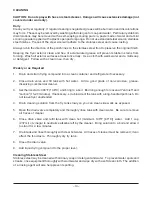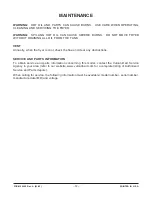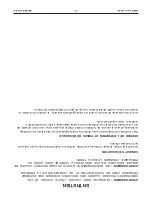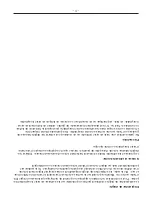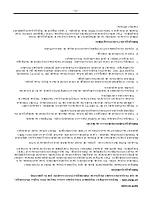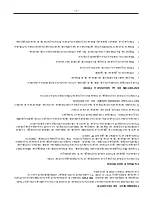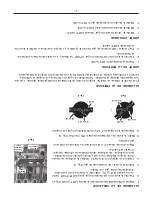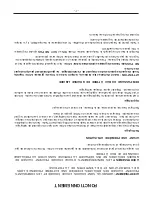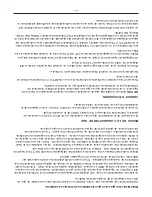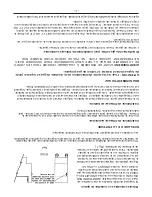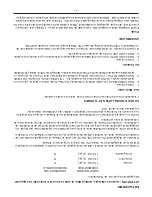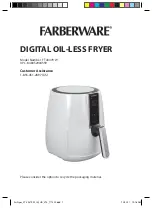
– 6 –
Front Gas Connection for Battery Installations
Codes require that a gas shutoff valve be installed in the gas line ahead of the fryer and battery of
equipment.
The gas manifold of a battery lineup of which the fryer is a part, must be installed using a regulator
design-certified by a nationally recognized testing lab to the applicable ANSI standard (regulators
available from Vulcan-Hart). The pressure regulator must have a maximum regulation capacity to
handle the total connected load and must have an adjustment range for manifold pressure marked on
the equipment rating plate(s). If the manifold pressure of the connected equipment is not the same, a
separate regulator must be supplied for all devices operating under different manifold pressure ratings.
Set all fryers in line with each other and adjacent ranges (16" [40 cm] clearance required between fryer
and open top flame units). Remove control panels for access to union connections or manifold pipes.
Screw each union finger-tight to adjoining connection. Do not overtighten. Tighten each union,
ensuring that the gas manifold is not pulled to the left or right by overtightening the unions. When all
fryers in the battery are connected finger-tight, then tighten with a pipe wrench. Always use pipe joint
compound that is resistant to the action of liquid petroleum gases on unions.
TESTING THE GAS SUPPLY SYSTEM
When test pressures exceed
1
/
2
psig (3.45 kPa), the fryer and its individual shutoff valve must be
disconnected from the gas supply piping system.
When test pressures are
1
/
2
psig (3.45 kPa) or less, the fryer must be isolated from the gas supply
system by closing its individual manual shutoff valve.
FLUE CONNECTIONS
DO NOT
obstruct the flow of flue gases from the flue located at the rear of the fryer. It is recommended
that the flue gases be ventilated to the outside of the building through a ventilation system installed by
qualified personnel.
Adequate ventilation must be provided and must comply with NFPA Standard #96 (latest edition), and
with local codes.
Never make flue connections directly to the fryer.
The fryer must be located under a hood which has an adequate connection to an exhaust duct. The
hood must extend 6" (152.4 mm) beyond fryer sides.
Clearance above fryer should be adequate for products of combustion to be removed efficiently. An
18" (457 mm) minimum clearance should be maintained between the flue vent and the filters of the hood
venting system.
Information on the construction and installation of ventilating hoods may be obtained from the standard
for "Vapor Removal from Cooking Equipment," NFPA No. 96 (latest edition), available from the National
Fire Protection Association, Batterymarch Park, Quincy, MA 02269.
Adequate air should be provided in the kitchen to replace air taken out by the ventilating system. This
will prevent fryer function from being affected by a reduced atmospheric pressure.

